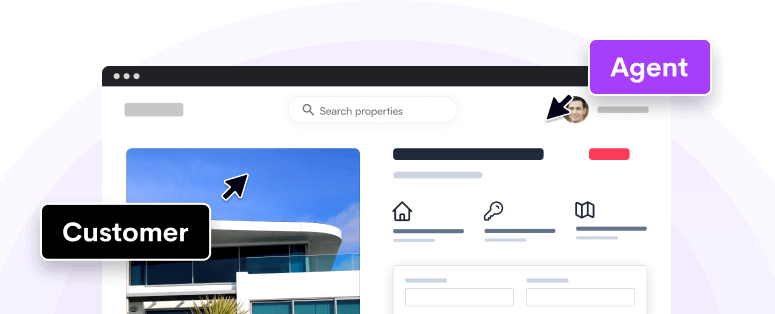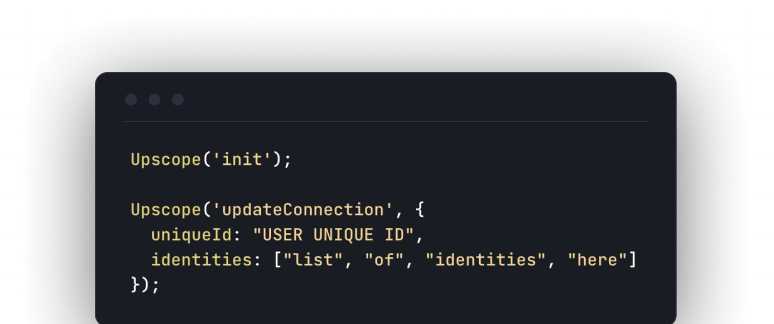Ever wonder if those boring whitepapers and security pages on some SaaS
websites are necessary? Do you have to email people to gain enterprise
customers? Below we describe what we hoped enterprise sales would be like, how
we realistically thought it would be and what it turned out to be with
Upscope.
Related: How We Priced 3 Enterprise Software
Deals
Related: Why SaaS Companies Realise they Need Enterprise
Sales
Also see: Upscope's Pricing Model that
Worked
What we hoped the process for selling to enterprise was

-
Person from big company sees our content and signs up.
-
They install the software and trial it.
-
They pay big bucks for it.
If I could insert a laughing emoji that gifs into a crying emoji here, I
would.
What we realistically thought it would require

-
Our enterprise sales sniper sends smart customised emails to person in big
company. -
Person in big company talks to their team and convinces them to try the
product. -
They trial the software.
-
They pay big bucks for it.
The customised email part certainly works for companies but we don’t have
enterprise sales snipers at present, we’ve gone a different route of mostly
inbound marketing and some more general emails.
What it turned out to be

-
Person or buyer team at big company comes to our site from content or an
integration listing, a comparison site or even a cold email we had sent out
(but it's hard to track sometimes). They check out the site and ask questions
via live chat or email about security and data without signing up. Then
they go away. -
Person returns to ask more questions about security, contracts, pricing and
goes off to thoroughly evaluate the product compared to competitors. -
They talk to their team, they pass round those whitepapers if you have
them, they get clearance from their development or security team on the
product. Often the key questions focus on data because they don’t want to get
fired for screwing up with customer data. -
They ask us to give a demo to a few key knowledgeable people.
-
They ask for a second demo to key decision makers in their company.
-
Person at big company eventually, sometimes after a month or 2, signs up
for trial and it goes through testing on their local machines. -
Person at big company asks for an extended trial because 2 weeks is not
enough to do internal testing, testing on staging server and then testing on
production server. -
Person at big company might need to prove the value of product via
statistics to themselves and others in the company so they’ll ask you for some
way to monitor stats during the trial. -
They finally pay big bucks for it.
Other things they bring up and what to do
Upscope is a co-browsing (aka
no-download interactive screen sharing) service and we get all sorts of
requests including on-premise deployment, purchase orders, security
questionnaires, EU servers.
Purchase orders
Most of your smaller customers plug in their credit card and they’re off but
some big companies don’t do that.
They might send you a purchase order.
Yeah, wtf is that right?
You’ve built an entire system of automated accounting on Stripe + Xero and
then suddenly people want to send purchase orders that require manual entry.
Security questionnaires
They might need you to fill in a security questionnaire which is 8 pages
long.
We have a separate security page which details all our security initiatives
but they will STILL send us this questionnaire and it really is 8 pages long
with one of them being 48 pages in length.
Just get through it as best as you can.
Oh and some people will have a 3rd party vet you for security. So, you have to
fill in their questionnaire and they go off and do all their checks to clear
you.
On-premise deployment
They might ask for on-premise deployment which then requires a different
tech process and complexities in maintaining it.
This happens with certain financial organisations that need complete control
over what goes in and out. We do on-premise deployment and people are willing
to pay for it but we don't do it for your 2 person SaaS company, it's done for
larger organisations, paying annually and with additional charges for
consultation beyond the normal process.
Regional servers
They might need data to only pass through servers in their country so
you’ll have to add some to their region.
What can you prepare so you get these enterprise deals?
Have live chat, have a phone number listed even if they don’t use it, have an
about us page that says you’re not high and about to smoke their customer data
in a pipe, have your location listed and have some of those more boring
security pages, white papers and videos.
Alternatively, choose life and take up fishing.
OEM type deals with perpetual licenses are different
Some companies still run "OEM (original equipment manufacturer) and vendor"
type pricing and they want you to work with them the same way.
For software companies, this is when a large company (OEM) wants to integrate
your (vendor) software into their system to sell on to their customers. Yes,
it's still white labelling but the pricing structure is different.
During your call with the OEM vendor they might mention the following terms:
Perpetual license.
Annual maintenance fee.
Tier 3 support.
Regional APAC and SAARC pricing.
What on earth does this stuff mean? See below.
Perpetual license and annual maintenance fee
The large company probably sells their product to the customer in a different
way to your regular monthly SaaS subscription which might be per seat as an
example. In your mind your thinking "Oh, they want to buy for 1,000 seats,
that would be 1,000 multiplied by 30 which is 30,000 per month". However,
that's not their current pricing model and trying to force yours on theirs
will not work. They instead charge a one-off fee per seat e.g. $300 one time
and they charge an annual maintenance fee per seat e.g. $30. The annual
maintenance fee is the recurring revenue.
They'll also ask for flexibility of say 20% on that pricing so they can
negotiate with their clients and get the deal through.
Why would it be worth doing any of this? Is that perpetual license stuff worth
it?
If they're talking about this sort of pricing then it would involve 1,000s of
seats and that's worth a lot to a SaaS company. We have not come across
companies talking about this model for smaller numbers yet.
Tier 3 support
They expect Tier 3 support from you. They supply tier 1 and tier 2 support
which is basically live chat or email support at tier 1 and if that does not
work it's escalated to some basic technical support at tier 2. However, if
they can't fix the problem, they'll escalate it to you as the provider of the
white labelled software and that's tier 3. There may even be a tier 4 which
has special emergency rules and procedures around it.
Regional APAC pricing
They know from experience that pricing for a company in South Asia needs to be
lower than pricing for a company in Wester Europe or the US or they won't make
as many sales. You might therefore end up offering "Basic" and "Premium"
pricing depending on which region they are in. Again, as you would be dealing
with high volumes, it's down to the maths of how your business works.
Interesting side effects
We didn’t think Upscope would become
one of those companies with white papers and security pages. I think it’s
important to have a personality and not turn into a corporate drone type
company which is very tempting when faced with security conscious corporates.
The tone is important though. Having those white papers and security pages for
people who ask is also a sign of respect, in that you take their issues
seriously. Our tone on the website and in our emails has definitely changed
though we’ve only adjusted it, not taken the heart out from it.
Tough SaaS questions: Answers to the 12 Questions that drive SaaS
companies crazy
Enterprise SaaS pricing: How We Priced 3 Enterprise Software
Deals
Why do Enterprise sales: Why SaaS Companies Realise they Need Enterprise
Sales
Upscope's pricing mistakes: Upscope's Pricing Model that
Worked






